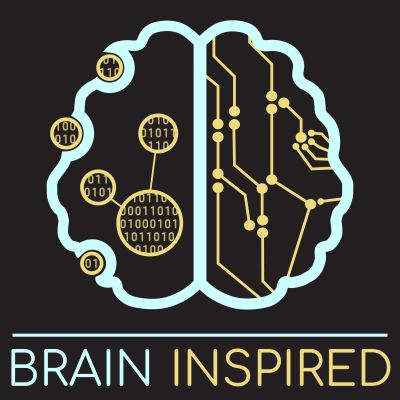Neuroscience and artificial intelligence work better together. Brain inspired is a celebration and exploration of the ideas driving our progress to understand intelligence. I interview experts about their work at the interface of neuroscience, artificial intelligence, cognitive science, philosophy, psychology, and more: the symbiosis of these overlapping fields, how they inform each other, where they differ, what the past brought us, and what the future brings. Topics include computational neuroscience, supervised machine learning, unsupervised learning, reinforcement learning, deep learning, convolutional and recurrent neural networks, decision-making science, AI agents, backpropagation, credit assignment, neuroengineering, neuromorphics, emergence, philosophy of mind, consciousness, general AI, spiking neural networks, data science, and a lot more. The podcast is not produced for a general audience. Instead, it aims to educate, challenge, inspire, and hopefully entertain those interested in learning more about neuroscience and AI.
https://braininspired.co/series/brain-inspired/
BI 090 Chris Eliasmith: Building the Human Brain
Chris and I discuss his Spaun large scale model of the human brain (Semantic Pointer Architecture Unified Network), as detailed in his book How to Build a Brain. We talk about his philosophical approach, how Spaun compares to Randy O'Reilly's Leabra networks, the Applied Brain Research Chris co-founded, and I have guest questions from Brad Aimone, Steve Potter, and Randy O'Reilly.
- Chris's website.
- Applied Brain Research.
- The book: How to Build a Brain.
- Nengo (you can run Spaun).
- Paper summary of Spaun: A large-scale model of the functioning brain.
Some takeaways:
- Spaun is an embodied fully functional cognitive architecture with one eye for task instructions and an arm for responses.
- Chris uses elements from symbolic, connectionist, and dynamical systems approaches in cognitive science.
- The neural engineering framework (NEF) is how functions get instantiated in spiking neural networks.
- The semantic pointer architecture (SPA) is how representations are stored and transformed - i.e. the symbolic-like cognitive processing.
Time Points:
0:00 - Intro 2:29 - Sense of awe 6:20 - Large-scale models 9:24 - Descriptive pragmatism 15:43 - Asking better questions 22:48 - Brad Aimone question: Neural engineering framework 29:07 - Engineering to build vs. understand 32:12 - Why is AI world not interested in brains/minds? 37:09 - Steve Potter neuromorphics question 44:51 - Spaun 49:33 - Semantic Pointer Architecture 56:04 - Representations 58:21 - Randy O'Reilly question 1 1:07:33 - Randy O'Reilly question 2 1:10:31 - Spaun vs. Leabra 1:32:43 - How would Chris start over?
